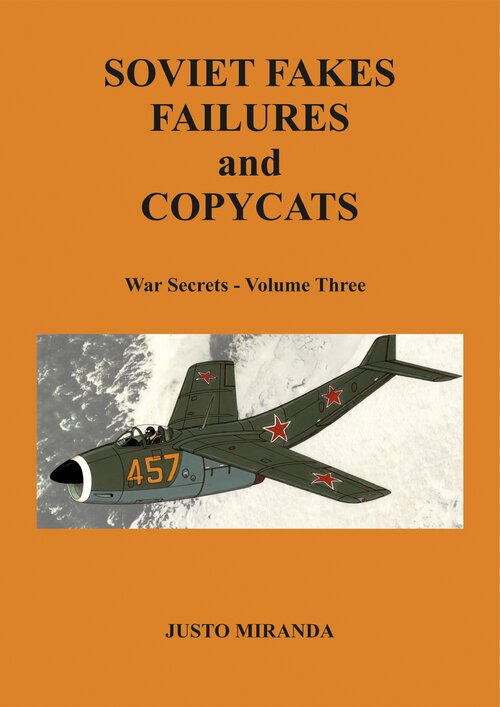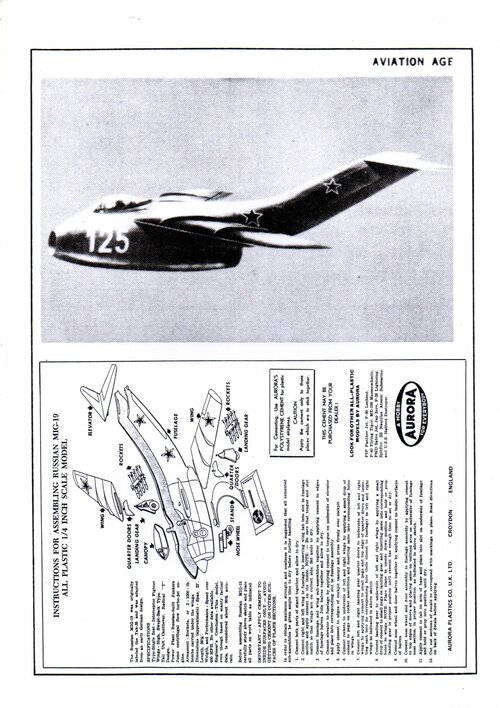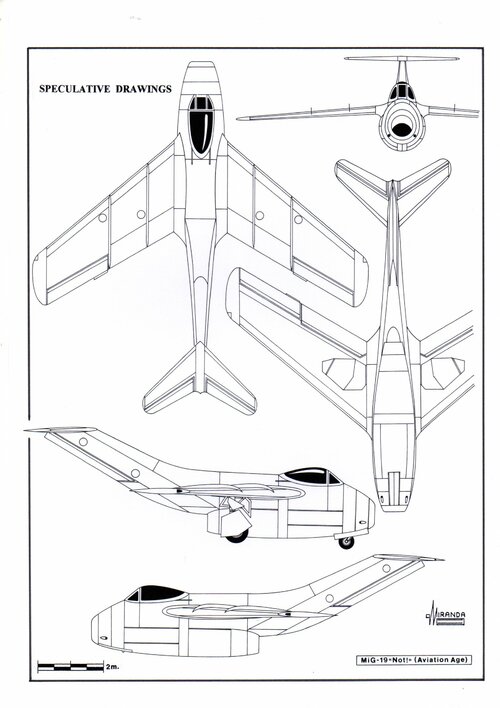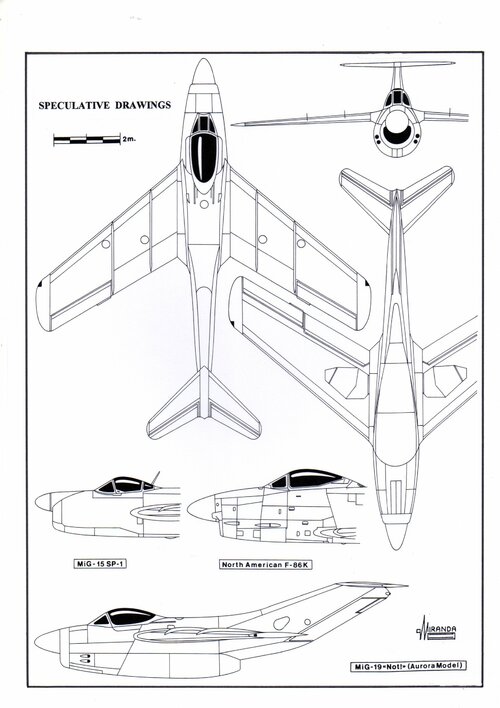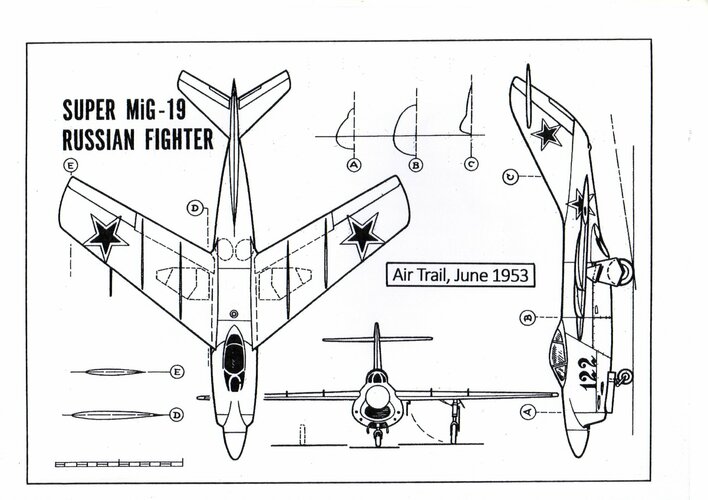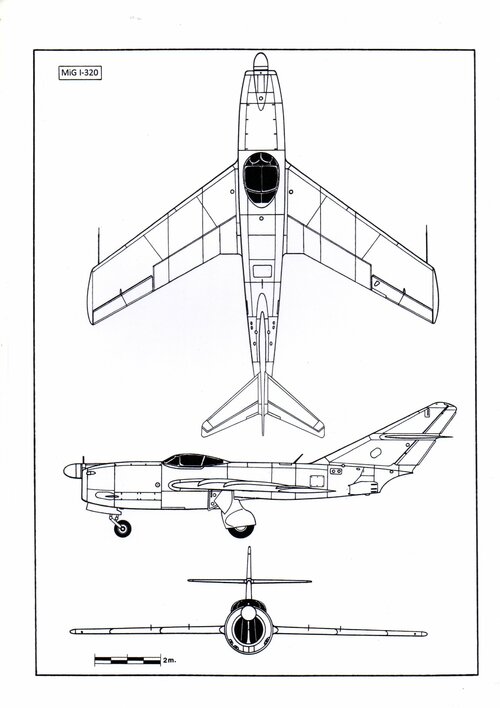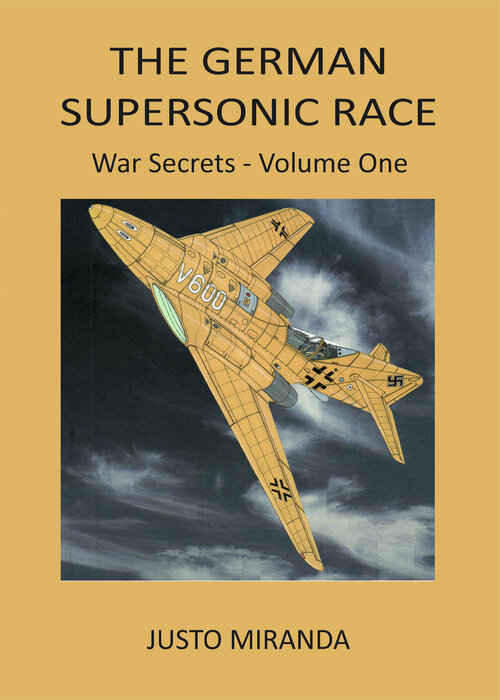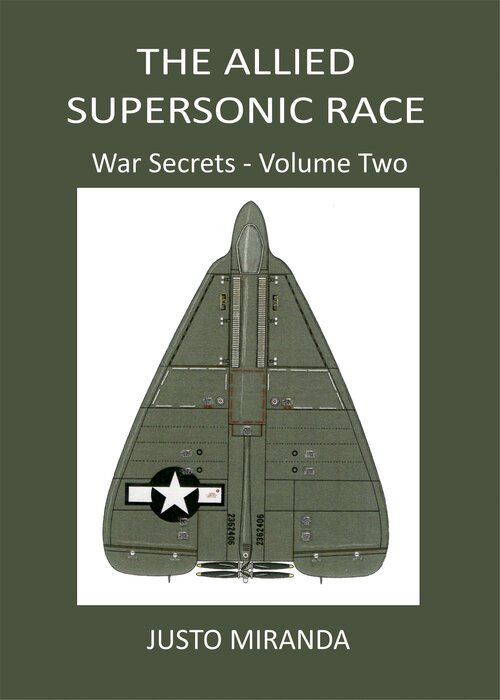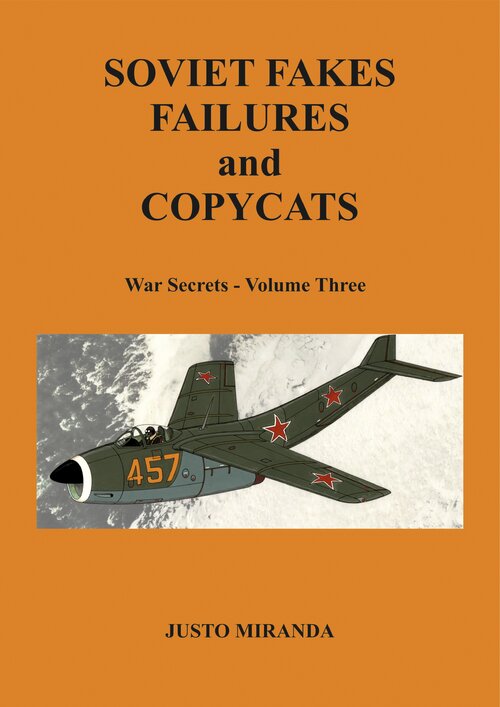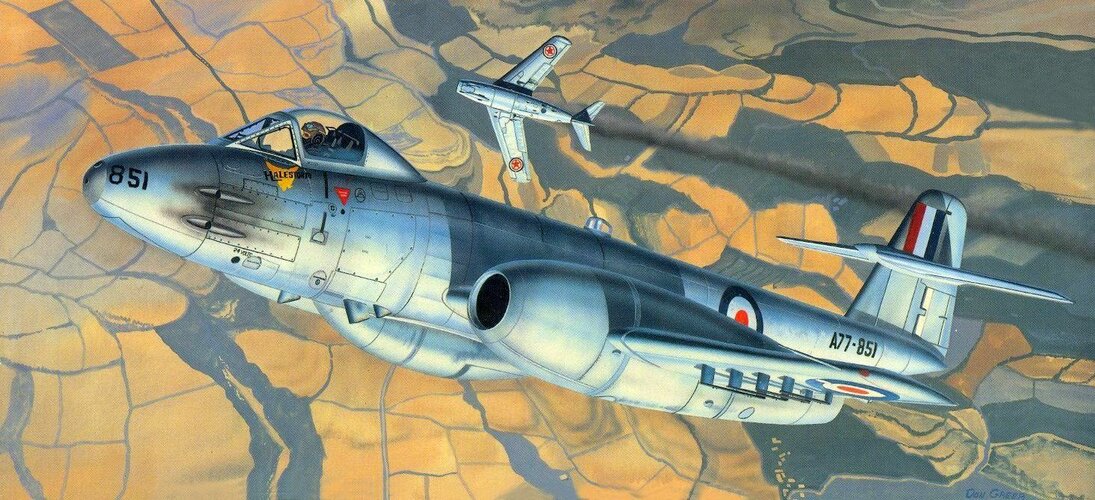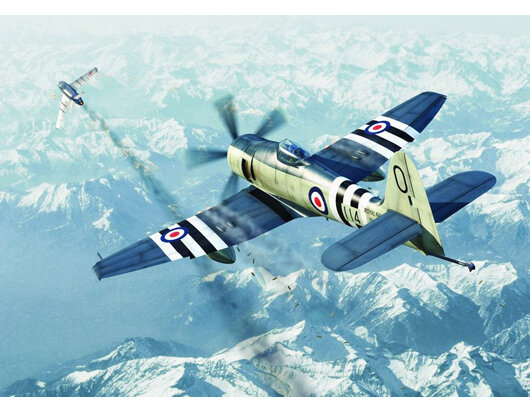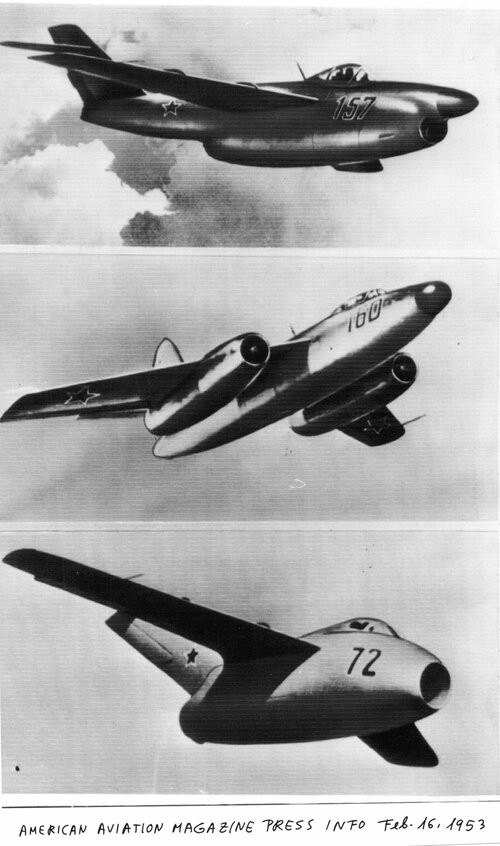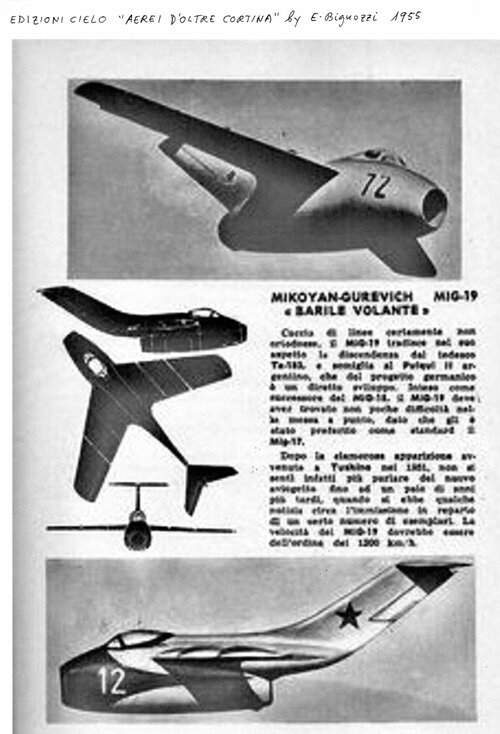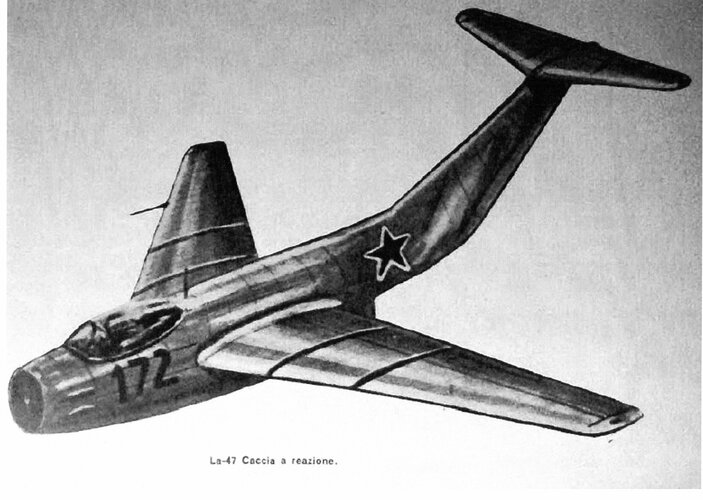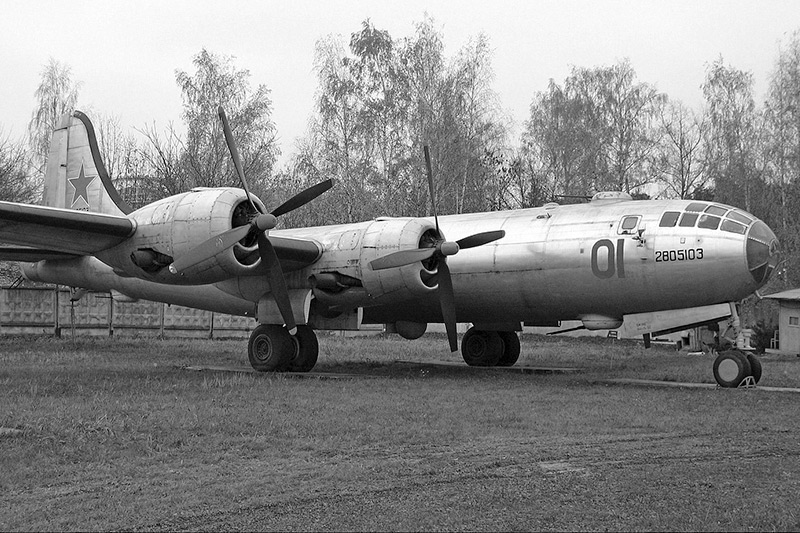You are using an out of date browser. It may not display this or other websites correctly.
You should upgrade or use an alternative browser.
You should upgrade or use an alternative browser.
Soviet Fakes, Failures and Copycats War Secrets- Volume Three
- Thread starter Justo Miranda
- Start date
greenmartian2017
The Shadow knows what lurks in the hearts of men
- Joined
- 13 May 2008
- Messages
- 163
- Reaction score
- 123
JM, you know I'm going to ask...
Can you post the table of contents?
Would be helpful to me.
Thanks.
Can you post the table of contents?
Would be helpful to me.
Thanks.
Dilandu
I'm dissatisfied, which means, I exist.
Available in September ( Amazon-Kindle)
The covert art author seems to draw the Yak-15 first, then realize it would not fit into space available and give it a strange mid-hull bend.
P.S. How exactly Yak-15 is "fake, failure or copycat"? Just gecause it used a copy of German engine?
The Soviet industry proved to be unable to build and efficient turbo-supercharger during the World War II and all the programmes for the construction of high-altitude interceptors (MiG-7, MiG-11, Polikarpov VP, K, Sukhoi Su-1, Su-3 and Yak-9 PD) were affected by that. The turbojets of Soviet design did not have much success either and the rocket propelled interceptors did not result practical.
To achieve high speed fighters, they resorted to desperate measures, fitting the aircrafts with a conventional piston engine that would be complemented by an unsophisticated Campini-type afterburner located in the rear fuselage (MiG I-250/N, Sukhoi Su-5). By the end of the war the Western Powers had centrifugal turbojets with a thrust of 1,500 kg whereas the Soviets just had some Junkers Jumo 004B-1 (RD 10) with 900 kg static thrust and BMW 003 A-1 with 800 kg that had been captured to the Germans. Both proved to be insufficient for the needs of the time given that, even using the Jumo 004 C (RD 10F) with afterburner, reached 1,100 kg only.
With the help of German scientists prisoners of war, the Soviets tried to develop the Jumo 004 H of 1,800 kg but the technological step required several years of testing. Therefore, they found themselves forced to design very light fighters, with the shortest possible air-intake ducts and tailpipes, to best profit of the scarce power available. The first generation of Soviet jet fighters Lavochkin La-150/152/156/174, MiG-9, Sukhoi Su-9 and Yakovlev Yak-15/17/19 were straight wing designs propelled by the axial flow turbojet Jumo 004 B-1.
The only way to increase their performances consisted on using rear swept wings and tailfins developed by the German aerodynamicists of the TsAGI research centre. A swept winged fighter was ordered to the Lavochkin and MiG design teams under the codename ‘Project S’. The engine should be a Jumo 004 C. Lavochkin just built a version of the La-174 TK with 35 degrees rear swept wing that was named La-160.
During the Cold War, the Soviets adopted a policy of maximum secrecy to hide their technical inferiority. Within this concept, in which the mystery and the lack of information about what happened at the other side of the Iron Curtain favoured the curiosity of the western public, several journalists working in aircraft publications had the temptation to speculate what could be the next soviet fighter
The Soviets revealed the existence of six new types of jet fighters, including the Lavochkin La-160, in the Summer Aviation Day display at Thusino Airfield on 3 August 1947. The variety of unknown models caused some confusion among the journalists attending the event and it was the origin of a lucrative traffic of tricky photographs coming from East Germany that remained active until the early sixties.
The introduction of the MiG-15 in North Korea in August of 1950 was, without any doubt, a bad surprise for the Western World. Aviation specialists were waiting, with a certain apprehension, for its successor.
In 1951, the Aviation Age Magazine published an eye-catching picture of a Soviet fighter like the Focke-Wulf Ta 183, with a large tailfin of the same length as the fuselage and two fences in each wing panel, with the caption: The latest product of Russia’s aircraft designers, a very fast interceptor-fighter designated MiG-19. The dark painting, the red stars bordered with white, the number ‘125’ painted in the nose section and the radical aerodynamic design were a very credible set for the public, but it did not deceive the experts who ruled that an airplane with these characteristics would be useless as a weapons platform, due to excessive snaking.
Despite this, the U.S. Flight magazine published the same photograph in 1957, including some technical data: supersonic speed, 45,000 ft. ceiling, 34 ft. wingspan, 12 ft. height and over 14,000 lbs maximum weight. On 16 February 1953, the American Aviation Magazine Press published a photo trick of a Ta 183 model with wing fences, overall aluminium paint and the number ‘72’ in the nose.
The Aurora Company marketed a plastic model kit called Yak-25 in June that was based on the photo of Aviation Age but with a nose radome inspired by the real prototype MiG-15bis (SP-1). In the 1954 edition the name was changed to MiG-19 in the box art. In 1955 the Italian magazine Edizioni Cielo published an article by E. Bignozzi that included a three view and one artist profile of the Aviation Age/MiG-19 whose maximum speed was estimated at 1,200 km/h. In 1957 the photo of ‘72’ was published again in the French magazine L'Aviation Nouvelle, Larousse. The Soviet Ta 183 myth continued until April 1961 with the publication of a photo trick in the German magazine Flugwelt.
Certain information on the MiG I-320, an all-weather interceptor of 1949 that never exceeded the prototype phase, was filtered to the western press in 1953. It had two superposed turbojets and one nose radome for the parabolic mirror of the Toriy radar. Based on a photo that did not allow to see the site of the turbojets, the intelligent illustrator De Lancey drew a three-view scale drawing and a detailed cutaway, with side-by-side turbojets, that were published in June of 1953 in the U.S. Magazine Air Trails to illustrate an article by James I. Pech entitled Inside Story of the MiG-19.
De Lancey possibly believed that the I-320 was an advanced version of the MiG-9 (a real airplane well known in the West that was equipped with straight wings and tail surfaces) and used the information available on the MiG-9 as the basis for his work. The article was widely circulated among aircraft enthusiast and modellers, prompting Paul Lindberg to commercialize the plastic kit called Russian Jet Fighter in 1954, based on De Lancey's drawings. In the 1955 edition the denomination in the box art changed to Russian MiG-19.
At the end of World War II the Soviets continued the research on rocket-fighters using the material captured from the Germans. In December of 1946 the MiG I-270 made its first flight. It was a Soviet version of the Me 263 equipped with tailplane and straight wings. The confusing information available on this model was interpreted by Western analysts as a version of the Focke-Wulf Volksjäger which was given the arbitrary name of Yak-21. On 13 April 1953, a cutaway was published in LIFE magazine. The illustration depicted a Volksjäger propelled by a Walter 509 rocket. In March of 1955 the drawer of Air Trails presented it like a version of the Me 163 with tail plane.
In 1973 Lockheed and the US Air Force began to work on a radar-evading strike aircraft under the code name HAVE Blue. In the early 1980s, some information about this secret project was leaked to the aviation press. In 1986, in the techno thriller novel Red Storm Rising Tom Clancy called it F-19 describing it as an airplane that employed a shape that deflected radar waves.
To achieve high speed fighters, they resorted to desperate measures, fitting the aircrafts with a conventional piston engine that would be complemented by an unsophisticated Campini-type afterburner located in the rear fuselage (MiG I-250/N, Sukhoi Su-5). By the end of the war the Western Powers had centrifugal turbojets with a thrust of 1,500 kg whereas the Soviets just had some Junkers Jumo 004B-1 (RD 10) with 900 kg static thrust and BMW 003 A-1 with 800 kg that had been captured to the Germans. Both proved to be insufficient for the needs of the time given that, even using the Jumo 004 C (RD 10F) with afterburner, reached 1,100 kg only.
With the help of German scientists prisoners of war, the Soviets tried to develop the Jumo 004 H of 1,800 kg but the technological step required several years of testing. Therefore, they found themselves forced to design very light fighters, with the shortest possible air-intake ducts and tailpipes, to best profit of the scarce power available. The first generation of Soviet jet fighters Lavochkin La-150/152/156/174, MiG-9, Sukhoi Su-9 and Yakovlev Yak-15/17/19 were straight wing designs propelled by the axial flow turbojet Jumo 004 B-1.
The only way to increase their performances consisted on using rear swept wings and tailfins developed by the German aerodynamicists of the TsAGI research centre. A swept winged fighter was ordered to the Lavochkin and MiG design teams under the codename ‘Project S’. The engine should be a Jumo 004 C. Lavochkin just built a version of the La-174 TK with 35 degrees rear swept wing that was named La-160.
During the Cold War, the Soviets adopted a policy of maximum secrecy to hide their technical inferiority. Within this concept, in which the mystery and the lack of information about what happened at the other side of the Iron Curtain favoured the curiosity of the western public, several journalists working in aircraft publications had the temptation to speculate what could be the next soviet fighter
The Soviets revealed the existence of six new types of jet fighters, including the Lavochkin La-160, in the Summer Aviation Day display at Thusino Airfield on 3 August 1947. The variety of unknown models caused some confusion among the journalists attending the event and it was the origin of a lucrative traffic of tricky photographs coming from East Germany that remained active until the early sixties.
The introduction of the MiG-15 in North Korea in August of 1950 was, without any doubt, a bad surprise for the Western World. Aviation specialists were waiting, with a certain apprehension, for its successor.
In 1951, the Aviation Age Magazine published an eye-catching picture of a Soviet fighter like the Focke-Wulf Ta 183, with a large tailfin of the same length as the fuselage and two fences in each wing panel, with the caption: The latest product of Russia’s aircraft designers, a very fast interceptor-fighter designated MiG-19. The dark painting, the red stars bordered with white, the number ‘125’ painted in the nose section and the radical aerodynamic design were a very credible set for the public, but it did not deceive the experts who ruled that an airplane with these characteristics would be useless as a weapons platform, due to excessive snaking.
Despite this, the U.S. Flight magazine published the same photograph in 1957, including some technical data: supersonic speed, 45,000 ft. ceiling, 34 ft. wingspan, 12 ft. height and over 14,000 lbs maximum weight. On 16 February 1953, the American Aviation Magazine Press published a photo trick of a Ta 183 model with wing fences, overall aluminium paint and the number ‘72’ in the nose.
The Aurora Company marketed a plastic model kit called Yak-25 in June that was based on the photo of Aviation Age but with a nose radome inspired by the real prototype MiG-15bis (SP-1). In the 1954 edition the name was changed to MiG-19 in the box art. In 1955 the Italian magazine Edizioni Cielo published an article by E. Bignozzi that included a three view and one artist profile of the Aviation Age/MiG-19 whose maximum speed was estimated at 1,200 km/h. In 1957 the photo of ‘72’ was published again in the French magazine L'Aviation Nouvelle, Larousse. The Soviet Ta 183 myth continued until April 1961 with the publication of a photo trick in the German magazine Flugwelt.
Certain information on the MiG I-320, an all-weather interceptor of 1949 that never exceeded the prototype phase, was filtered to the western press in 1953. It had two superposed turbojets and one nose radome for the parabolic mirror of the Toriy radar. Based on a photo that did not allow to see the site of the turbojets, the intelligent illustrator De Lancey drew a three-view scale drawing and a detailed cutaway, with side-by-side turbojets, that were published in June of 1953 in the U.S. Magazine Air Trails to illustrate an article by James I. Pech entitled Inside Story of the MiG-19.
De Lancey possibly believed that the I-320 was an advanced version of the MiG-9 (a real airplane well known in the West that was equipped with straight wings and tail surfaces) and used the information available on the MiG-9 as the basis for his work. The article was widely circulated among aircraft enthusiast and modellers, prompting Paul Lindberg to commercialize the plastic kit called Russian Jet Fighter in 1954, based on De Lancey's drawings. In the 1955 edition the denomination in the box art changed to Russian MiG-19.
At the end of World War II the Soviets continued the research on rocket-fighters using the material captured from the Germans. In December of 1946 the MiG I-270 made its first flight. It was a Soviet version of the Me 263 equipped with tailplane and straight wings. The confusing information available on this model was interpreted by Western analysts as a version of the Focke-Wulf Volksjäger which was given the arbitrary name of Yak-21. On 13 April 1953, a cutaway was published in LIFE magazine. The illustration depicted a Volksjäger propelled by a Walter 509 rocket. In March of 1955 the drawer of Air Trails presented it like a version of the Me 163 with tail plane.
In 1973 Lockheed and the US Air Force began to work on a radar-evading strike aircraft under the code name HAVE Blue. In the early 1980s, some information about this secret project was leaked to the aviation press. In 1986, in the techno thriller novel Red Storm Rising Tom Clancy called it F-19 describing it as an airplane that employed a shape that deflected radar waves.
Attachments
-Airco DH.9 A with Mercedes D.IV engine (Polikarpov R-1).JM, you know I'm going to ask...
Can you post the table of contents?
Would be helpful to me.
Thanks.
-Airco DH.9 A with Siddeley Puma engine (Polikarpov R-2).
-Polikarpov I-1 with Liberty L-12 engine (M-5).
-The Soviet First Five Years Plan of 1928-1932.
-Creation of the Latvian and Lithuanian air forces to protect their independence.
-Polikarpov I-3 versus Polish Bleriot SPAD 61 and Lithuanian Fiat C.R. 20 fighters.
-Polikarpov I-5 inspirations: Boeing XF4B-1 and Bristol Bulldog.
-The weapons race: Swedish Air Force expansion.
-Polikarpov I-15 inspirations: P.Z.L. P.6 and Curtiss XP-10 and Curtiss F9C.
- Soviet M-25 engine inspiration: Wright Cyclone SGR-1820-F-3.
-Polikarpov CKB-1 (I-16 prototype) inspiration: Gee Bee Model Z, Gee Bee R-1, Lockheed Altair and Lorraine-Hanriot 41/150 racers.
-Spanish Civil War, the democracies grew horrified by the revolutionary excesses.
-Soviet intervention: Between 1936 and 1938, the U.S.S.R. made a demonstration of force by sending to Spain hundred-and-eight Polikarpov I-15, ninety-three Polikarpov I-152, ninety-three Polikarpov I-16 Type 5, sixty-eight Polikarpov I-16 Type 6, hundred-and--twenty-four Polikarpov I-16 Type 10, thirty-one Polikarpov R-5 Army cooperation airplanes, thirty-one Polikarpov R-5 Cht strafers, sixty-two Polikarpov RZ light bombers and ninety-three Tupolev SB-2 medium bombers. They also sent 347 tanks, 60 armoured vehicles, 1,186 cannons, 340 mortars, 20,486 machine guns, 497,813 rifles, 862 millions of cartridges, 3.5 millions of artillery shells, 10,000 aviation bombs and four torpedo boats.
- Polikarpov I-15 versus Heinkel He 51, Dornier Do 17 M, Heinkel He 111 B-1, Dornier Do 17 F-1 and Do 17 P-1 of the Legion Condor.
-Polikarpov I-16 versus Messerschmitt Bf 109 B, C, D and E. First defeat.
-The ShKAS inspiration: Polish Szakats feed system and French Berthier gas regulator.
-The ShVAK inspiration: French H.S. 9 and H.S.404 cannons.
-Baltic panic: the Estonian Spitfires and Latvian Hurricanes.
- Second defeat: Khalkhin Gol/Nomonhan.
-Polikarpov I-152, I-153 and I-16 versus Kawasaki Ki.10 and Nakajima Ki.27 fighters.
-The Soviet-German Non-Aggression Pact.
-Invasion of the defeated Poland, I-16 versus P.W.S. 26 trainers.
- Third defeat: Finland.
- On November 30, 1939, the Soviets attacked the Finland eastern border with 450,000 men (20 divisions), 2,000 tanks, 2,050 cannons and 3,250 aircraft from types Polikarpov I-152, I-153, I-16, R-5, R-Z and U-2, Tupolev SB-2M103 and TB-3, Ilyushin DB-3 M and Beriev MBR-2.
The Finnish Air Force Ilmavoimat strength was 135 aircrafts: thirty-six Fokker D.XXI, ten Bristol Bulldog Mk.IVA, seventeen Bristol Blenheim Mk.I, thirty-two Fokker C.X, seven Fokker C.VE, fourteen Blackburn Ripon IIF, four Junkers F.13, three de Havilland Moth, three V.L. Saaski and one V.L. Kotka.
The Finns fought fiercely, causing so many losses to the Soviets that they were forced to sign an armistice on 13 March 1940. The international community condemned the aggression by expelling the Soviet Union from the League of Nations on 14 December 1939 and offering military aid to Finland.
- The mediocre performance of Polikarpov fighters was mainly due to their poor design but also to the low manufacturing quality of the M-22, M-25, M-62 and M-63 engines.
The M-22 did not have the Bristol license and it was manufactured in accordance with the Gnôme-Rhône French version.
During the Second World War, the Soviets made massive use of French Hispano-Suiza H.S.12 Y engines, version Klimov M-105, to propel their Yak and LaGG fighters. The M-85 used by the bombers Ilyushin DB-3 was also a version of the Gnôme-Rhône 14 Kdrs.
- As an attempt to increase the top speed of the Polikarpov biplane fighters, on January 25, 1940 the I-152 (c/n 5942) was flight tested with two Merkulov DM-2 ramjet boosters mounted under each lower wing, and with two DM-4 burning petrol and ethyl alcohol in May 1940.
- As an attempt to increase the I-16 ceiling, in middle 1938 one M-25 engine fitted with one TK-1 turbocharger, based on the General Electric B-1 exhaust-driven turbo-supercharger, was mounted in the Type 5 (c/n 521A250) prototype.
-Turbochargers TK-2 and TK-3 failures.
- Sukhoi Su-1 failure.
- During the last months of 1940, the Luftwaffe’s special long-range reconnaissance unit Aufklärungsgruppe Ob.d.L. was operating a mixture of Dornier Do 215 B-4, Dornier Do 217 A-0, Junkers Ju 86 P-2 and Junkers Ju 86 R-1 spy planes.
The Gruppe began its operational life performing clandestine reconnaissance sorties, in civil disguise, deep into the Soviet airspace in preparation for Operation Barbarossa.
They took photographs of the Soviet defences which were to play an important role when the Germans invaded Russia, in June 1941.
-MiG-1 and MiG-3 failures.
- Sukhoi Su-3 failure.
-Lend Lease Hurricane Mk. IIA for the Moscow Defence.
-Lend Lease Spitfires, Thunderbolts and Kingcobras.
-The Soviet industry was unable to duplicate the two-speed, two stage gear driven British superchargers the US exhaust-driven turbo-superchargers and the German captured Vulkan coupling superchargers.
- The Lavochkin La-7 TK, Sukhoi Su-7R and Yak-3M failures.
-The mixed power plants fighters.
-LaGG-3 PVRD, Yak-7 PVRD, La-7S/D-10 PVRD, La-9 PVRD, La-9 RD-13, MiG I-250 N VRDK, Sukhoi I-107 VRDK, Yak-7R, La-7R and Yak-3 RD dead ends.
-Soviet jets failures: Gudkov VRD and LaGG-3 TKVRD fighters.
-Rocket fighters failures: Bereznyak-Isaev BI-1, Tikhonravov I-302, Florov 4302, MiG I-270 and Lavochkin I-162.
-Research rocket planes: Tsybin LL-1, LL-3, DFS 346-3 and Bisnovat 5-2.
-MiG-15 and La-15 German roots… I'm writing it now, the rest in September.
archipeppe
ACCESS: Top Secret
- Joined
- 18 October 2007
- Messages
- 2,291
- Reaction score
- 2,338
As far as I know is it for real, if I recall well it was a "good idea" by Labourist party of that times.The British government really helped providing Nene engines just in time for the Mig-15 (facepalm). Or is that only an urban legend ?
- Joined
- 11 March 2012
- Messages
- 3,016
- Reaction score
- 2,695
As far as I know is it for real, if I recall well it was a "good idea" by Labourist party of that times.The British government really helped providing Nene engines just in time for the Mig-15 (facepalm). Or is that only an urban legend ?
The other motivating factor was England's bankrupsy at the end of WW2.
They sold jet engines to the USSR to gain valuable foreign currency.
Hint: the Royal Canadian Navy received Hawker Sea Furies before the Royal Navy Fleet Air Arm because Canada could pay with butter. Britain was desperately short of edible fats and oils by the end of WW2. That shortage also explains why Britain resumed whaling after WW2.
I do not feel well enough informed to comment on the decisions of the British government at such a difficult time, but no one has published the opinions of the pilots of the Gloster Meteor, Hawker Sea Fury and Boeing B-29s who faced the MiG-15 with British engines, I suppose they would have something to say about it.
Attachments
24 to 48 hoursJusto,
I am not seeing The Allied Supersonic Race on Amazon.
Available in AmazonJusto,
I am not seeing The Allied Supersonic Race on Amazon.
Dilandu
I'm dissatisfied, which means, I exist.
- Second defeat: Khalkhin Gol/Nomonhan.
Er, what? If you do not notice, we kinda won Khalkhin Gol campaign...
Dilandu
I'm dissatisfied, which means, I exist.
-MiG-15 and La-15 German roots… I'm writing it now, the rest in September.
Another bunch of myths... those ones are rather outdated.
- Second defeat: Khalkhin Gol/Nomonhan.
Er, what? If you do not notice, we kinda won Khalkhin Gol campaign...
- Khalkin Gol/Nomonhan (11 May to 17 September 1939)
The Soviets were engaged in a war with Japan in the border of Outer Mongolia and Manchuria.
The Soviet Air Force (VVS) used four fighter regiments equipped with Polikarpov I-152, I-153 and I-16 (Types 6, 10, 17 and 18) and two bomber regiments with Tupolev SB-2M-100 and Polikarpov R-5.
The Imperial Japanese Army (IJA) sent six Sentais to the combat zone, equipped with Kawasaki Ki.10 and Nakajima Ki.27 fighters and six more with Nakajima Ki.4, Mitsubishi Ki.15, Mitsubishi Ki.21, Mitsubishi Ki.30, Tachikawa Ki.36 and Fiat BR.20 bombers.
It was a confrontation for prestige reasons and without gain of territories, in which the pilots of the IJA behaved very aggressive, despite having air and technological superiority. It was their first chance to emulate the successes obtained by the Imperial Japanese Navy (IJN) in China.
According to reports from Soviet veteran pilots of the Sino-Japanese war, the pilots of the Ki.27 made numerous attempts to ramming from the first fighting. On 22 June, a Ki.27 piloted by the 2Lt. Saito Shogo rammed the tail of the I-16 of Lt. Vorozheikin, over Kalka River.
On 5 August, a Ki.27 from the 11th Sentai, piloted by the 2Lt. Taro Kobayashi, rammed an I-153.
The Soviets soon copied the tactic, that they denominated Taran. On 20 July, the 2 Lt. Viktor Skobarikhin, of the 22nd IAP, rammed a Ki.27 of the 11th Sentai with his I-16. On 3 August, the Captain P. Kustov, of the 56th IAP, rammed a Japanese bomber. Two days later, a Ki.27 from the 11th Sentai, piloted by Tokuyaso Ishizuka, was rammed by the I-16 of Lt. Aleksandr Moskin. On 20 August, the 2 Lt. Viktor Rakhov, of the 22nd IAP, rammed a Ki.27 of the 11th Sentai with his I-16.
The clumsy and heavy I-152 were especially vulnerable in dogfight. On 28 May, all aircraft of the 22/4 IAP who took part in a battle against the Ki.27 were downed. They were hastily replaced by the new I-153 that just managed to survive the Japanese fury by using evasive manoeuvres. On the other hand, the Ki.27 could evade the combat thanks to their greater speed, which even exceeded that of the I-16, despite the drag generated by the fixed undercarriage of the Japanese fighter. The only efficient tactic against the Ki.27 consisted in taking advantage of the superior climb rate and dive speed of the I-16 in 'hit and run' attacks, avoiding the dogfight with the agile Nakajima.
The Japanese fighters did not use the radio, communicating through movements of the wings. That made them especially vulnerable to an attack from above, while they were carrying out strafing missions. The Ki.27 used outdated tubular gunsights and during the firing of machine guns the pilot could not watch around.
To compensate for the superior manoeuvrability of the Japanese fighters, the Soviets tried to increase the fire power with the introduction of the I-16 Type 17 armed with two 20 mm ShVAK cannons and 82 mm rockets. They could be carried under the wings of the fighters and used indiscriminately in air-to-air or ground attack configurations. The first use of unguided rockets in combat, launched from an aircraft, occurred on 20 August, when five I-16 fighters launched RS-82 rockets against a flight of Ki.27, shooting down two of them.
The Polikarpov Type 17 was particularly vulnerable in dogfight due to the extra weight of its weapons. For the Japanese the weight was all. They used to dismantle the radio, the masts of the antennas and the enclosed cockpits. Some pilots even avoided using parachutes to gain additional manoeuvrability.
With the start of World War II in the West, the Soviets decided to find an easier enemy in the defeated Poland and requested an armistice. On 16 September the hostilities ceased. The VVS lost 249 aircraft, of which 196 were fighters, and the IJN lost 220 aircraft, including 97 fighters.
Bibliography
Books
Sakaida, H., Japanese Army Air Force Aces 1937-45, Osprey, 1997.
Hillman, N., Ki.27 “Nate” Aces, Osprey, 2013.
Stapfer, H., Polikarpov Fighters in Action, Part I, Aircraft Nº 157, Squadron/Signal, 1995.
Sewell, J., Polikarpov Fighters in Action, Part II, Aircraft Nº 162, Squadron/Signal, 1996.
Maslov, M., Polikarpov I-15, I-16 and I-153 Aces, Osprey, 2010.
Polak, T., Stalin’s Falcons, Grub Street, 1999.
Bueschel, M., Nakajima Ki.27 A-B, Aircam Aviation Series Nº18, Osprey, 1972.
Liss, W., Polikarpov I-16, Profile Number 122.
Publications
Baëza, B., “Les Aigles Sauvages de l’Armée Impériale Japonaise”, Avions Nº 217 to 220.
Izawa, Y., “Les As de l’Armée Impériale Japonaise 1937-45”, Aéro Journal Octobre-Nov, 2014.
Green, W., “End of an Era, Polikarpov’s Chaika” Air Enthusiast/June 1971.
Maslov, M., “Polikarpov I-153, un biplan au combat”, Le Fana de l’Aviation Nº570, Mai 2017.
I respect your opinion but maybe I should wait to know my technical arguments when I publish them-MiG-15 and La-15 German roots… I'm writing it now, the rest in September.
Another bunch of myths... those ones are rather outdated.
Attachments
-
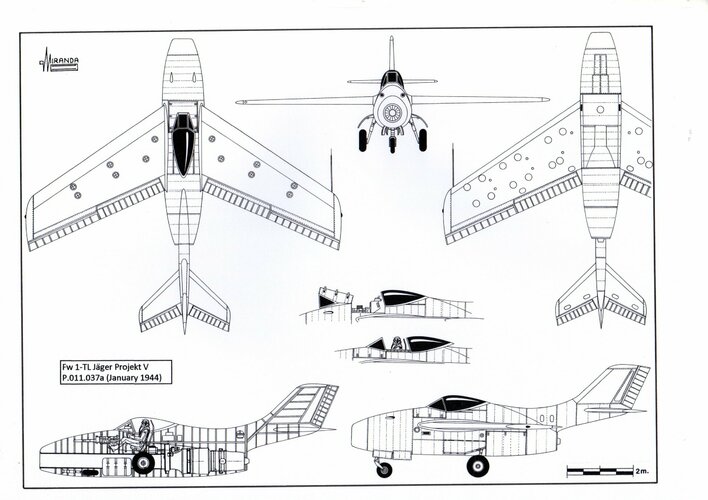 img041.jpg425.4 KB · Views: 178
img041.jpg425.4 KB · Views: 178 -
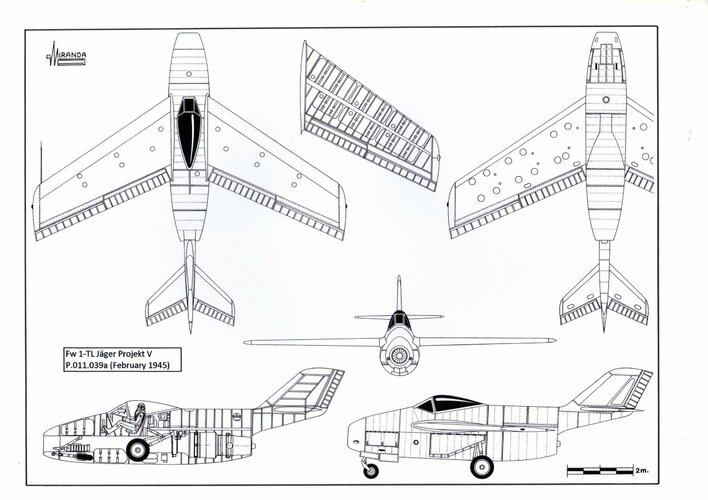 img042.jpg439.1 KB · Views: 166
img042.jpg439.1 KB · Views: 166 -
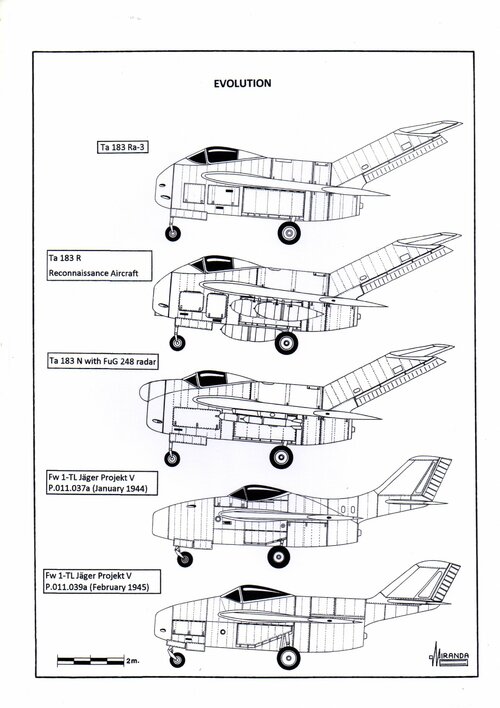 img045.jpg457.9 KB · Views: 168
img045.jpg457.9 KB · Views: 168 -
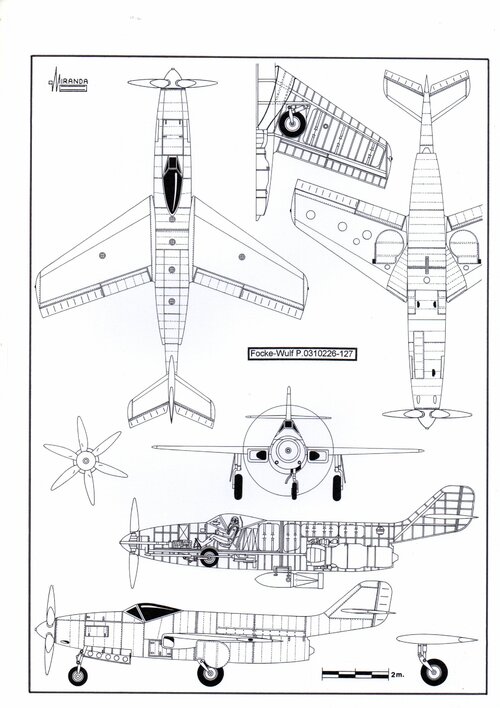 img064.jpg485.7 KB · Views: 155
img064.jpg485.7 KB · Views: 155 -
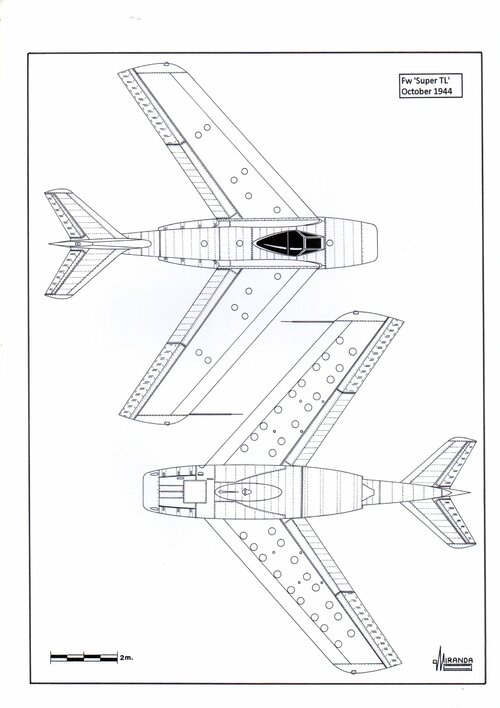 img067.jpg354.8 KB · Views: 146
img067.jpg354.8 KB · Views: 146 -
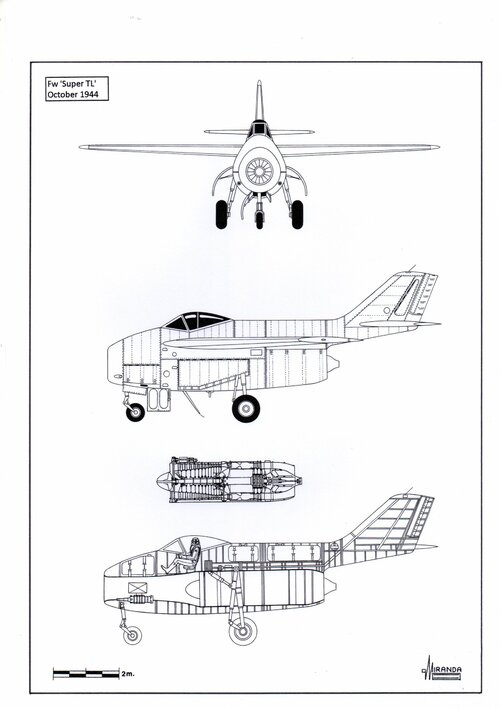 img068.jpg332.9 KB · Views: 150
img068.jpg332.9 KB · Views: 150 -
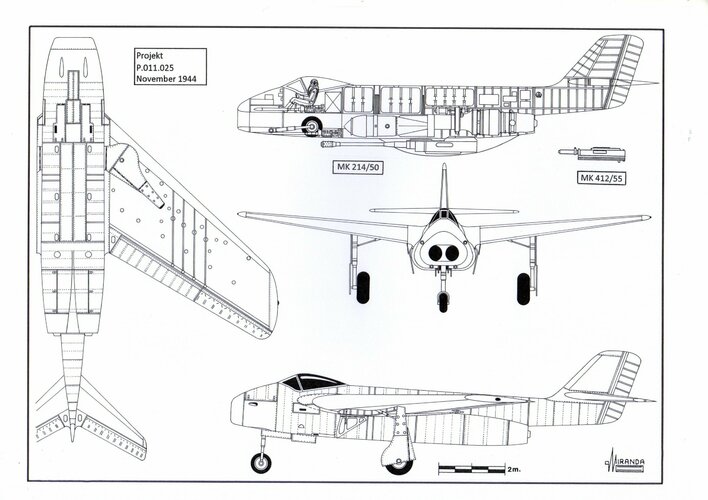 img084.jpg418.6 KB · Views: 152
img084.jpg418.6 KB · Views: 152 -
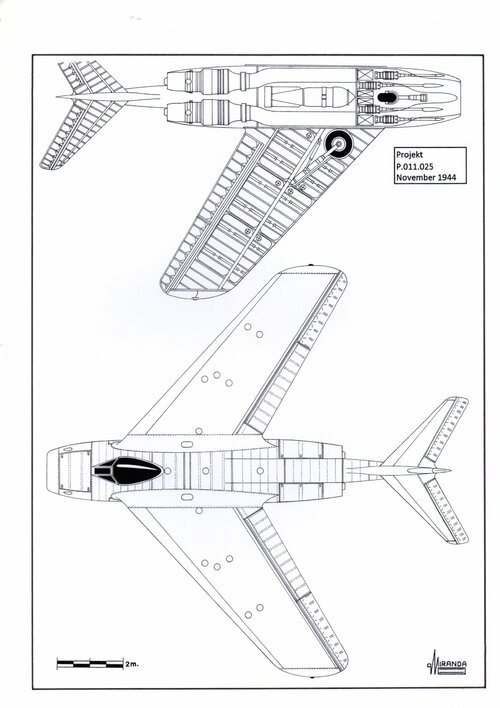 img085.jpg414.6 KB · Views: 147
img085.jpg414.6 KB · Views: 147 -
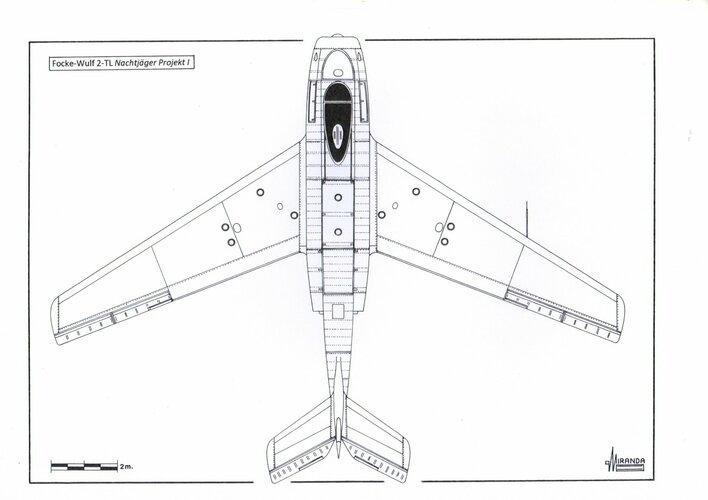 img094.jpg251.2 KB · Views: 153
img094.jpg251.2 KB · Views: 153 -
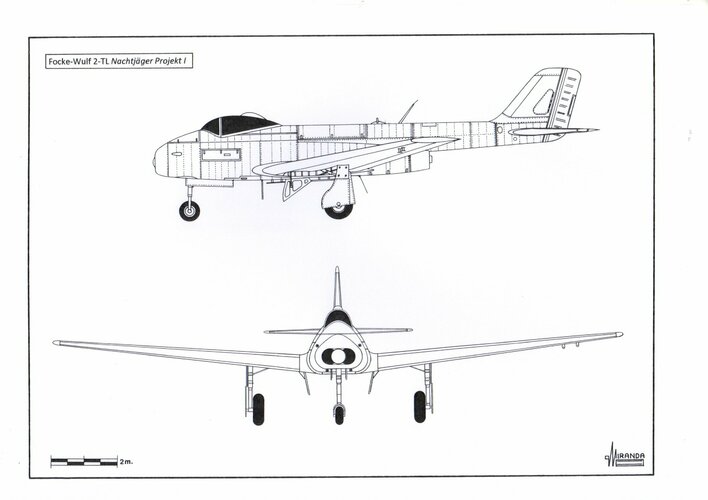 img095.jpg226.9 KB · Views: 169
img095.jpg226.9 KB · Views: 169
Dilandu
I'm dissatisfied, which means, I exist.
With the start of World War II in the West, the Soviets decided to find an easier enemy in the defeated Poland and requested an armistice.
The concentration of incorrect data in this phrasing is truly puzzling. I utterly fail to understand how you managed to not notice that it was Japan, not Soviet, who asked for armistice, after involved Japanese troops were encircled and destroyed. If you read the memories of Shigenori Togo, at this time - Japanese ambassador in USSR, you would find that it was he, who suggested the ceasefire to deescalate the situation. Moreover, your phrasing -
- suggesting that it was USSR who instigated hostilities in the first place? It's a bit too far, frankly.the Soviets decided to find an easier enemy
I respect your opinion but maybe I should wait to know my technical arguments when I publish them
Considering the "data" above, i.e. twisting of the facts to create the impression that USSR was defeated at Khalkin-Gol? Honestly, I'm not sure that I may rely on any of your technical arguments.
Last edited:
I am only interested in the evolution of aeronautical technology not in its political interpretation, if you talk to an engineer I will tell you one thing if you talk to a zampolit I will tell you another.With the start of World War II in the West, the Soviets decided to find an easier enemy in the defeated Poland and requested an armistice.
The concentration of incorrect data in this phrasing is truly puzzling. I utterly fail to understand how you managed to not notice that it was Japan, not Soviet, who asked for armistice, after involved Japanese troops were encircled and destroyed. If you read the memories of Shigenori Togo, at this time - Japanese ambassador in USSR, you would find that it was he, who suggested the ceasefire to deescalate the situation. Moreover, your phrasing -
- suggesting that it was USSR who instigated hostilities in the first place? It's a bit too far, frankly.the Soviets decided to find an easier enemy
I respect your opinion but maybe I should wait to know my technical arguments when I publish them
Considering the "data" above, i.e. twisting of the facts to create the impression that USSR was defeated at Khalkin-Gol? Honestly, I'm not sure that I may rely on any of your technical arguments.
sat_dxer
ACCESS: Confidential
- Joined
- 8 July 2020
- Messages
- 70
- Reaction score
- 68
Available in September ( Amazon-Kindle)
Re: Focke-Wulf Ta 183;
Page 66 "New Types" "Unidentified Fighter"
Military Aircraft of the USSR with drawings and silhouettes by Bjorn Karlstrom
Last edited by a moderator:
During the Cold War, the Soviets adopted a policy of maximum secrecy to hide their technical inferiority. Within this concept, in which the mystery and the lack of information about what happened at the other side of the Iron Curtain favoured the curiosity of the western public, several journalists working in aircraft publications had the temptation to speculate what could be the next soviet fighterRe: Focke-Wulf Ta 183;Available in September ( Amazon-Kindle)
Page 66 "New Types" "Unidentified Fighter" [1951]
Military Aircraft of the USSR
Charles W Cain and Denys J Voaden with drawings and silhouettes by Bjorn Karlstrom
The Soviets revealed the existence of six new types of jet fighters, including the Lavochkin La-160, in the Summer Aviation Day display at Thusino Airfield on 3 August 1947. The variety of unknown models caused some confusion among the journalists attending the event and it was the origin of a lucrative traffic of tricky photographs coming from East Germany that remained active until the early sixties.
Attachments
Russian Fakes here "Soviet Aircraft-Cold War Phantom Fighters.
 www.globalsecurity.org
www.globalsecurity.org
Soviet Aircraft - Phantom Fighters
Russian copycats here
 copy-cats.work
copy-cats.work
 copy-cats.work
copy-cats.work
USSR/Russia — aircraft02 — COPYCATS
Vehicles — COPYCATS
sat_dxer
ACCESS: Confidential
- Joined
- 8 July 2020
- Messages
- 70
- Reaction score
- 68
During the Cold War, the Soviets adopted a policy of maximum secrecy to hide their technical inferiority. Within this concept, in which the mystery and the lack of information about what happened at the other side of the Iron Curtain favoured the curiosity of the western public, several journalists working in aircraft publications had the temptation to speculate what could be the next soviet fighterRe: Focke-Wulf Ta 183;Available in September ( Amazon-Kindle)
Page 66 "New Types" "Unidentified Fighter" [1951]
Military Aircraft of the USSR
Charles W Cain and Denys J Voaden with drawings and silhouettes by Bjorn Karlstrom
The Soviets revealed the existence of six new types of jet fighters, including the Lavochkin La-160, in the Summer Aviation Day display at Thusino Airfield on 3 August 1947. The variety of unknown models caused some confusion among the journalists attending the event and it was the origin of a lucrative traffic of tricky photographs coming from East Germany that remained active until the early sixties.
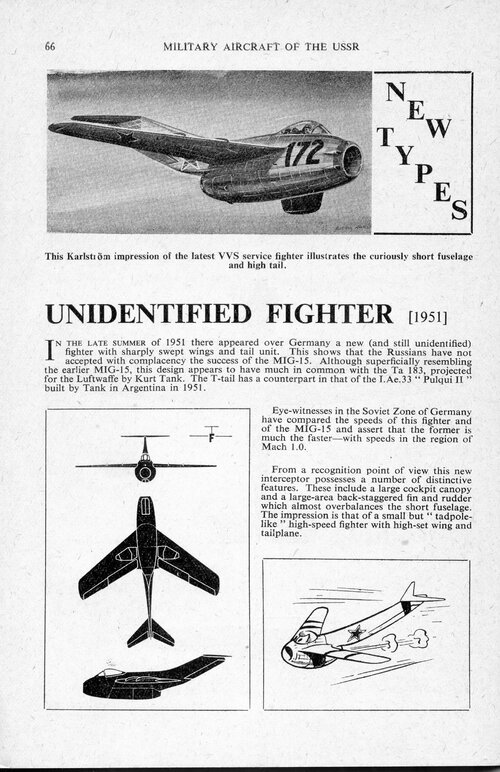
Do you want to tell us about the masterpieces of the Spanish aviation industry? If you called the Russian developments a technical inferiority. Then how to call the Spanish aviation full-fledged, and does it even exist?During the Cold War, the Soviets adopted a policy of maximum secrecy to hide their technical inferiority. Within this concept, in which the mystery and the lack of information about what happened at the other side of the Iron Curtain favoured the curiosity of the western public, several journalists working in aircraft publications had the temptation to speculate what could be the next soviet fighterRe: Focke-Wulf Ta 183;Available in September ( Amazon-Kindle)
Page 66 "New Types" "Unidentified Fighter" [1951]
Military Aircraft of the USSR
Charles W Cain and Denys J Voaden with drawings and silhouettes by Bjorn Karlstrom
The Soviets revealed the existence of six new types of jet fighters, including the Lavochkin La-160, in the Summer Aviation Day display at Thusino Airfield on 3 August 1947. The variety of unknown models caused some confusion among the journalists attending the event and it was the origin of a lucrative traffic of tricky photographs coming from East Germany that remained active until the early sixties.
Last edited by a moderator:
- Joined
- 22 January 2006
- Messages
- 3,896
- Reaction score
- 1,162
If you called the Russian developments a technical inferiority
I understand he is talking about Soviet Union aviation technical inferiority against United States of America on early Cold War years. Who cited Spain?
Please try to stay focused on the subject and avoid personal attacks
Do you understand the meaning of the word "inferior" well?If you called the Russian developments a technical inferiority
I understand he is talking about Soviet Union aviation technical inferiority against United States of America on early Cold War years. Who cited Spain?
Please try to stay focused on the subject and avoid personal attacks
Igor is right in his opinions on the low technological quality of the Spanish industry, the roots of the problem are in the Inquisition, in the Empire of Philip II all people with technical knowledge were threatened in one way or another, Spanish universities were closed to the intellectual influence of other countries for more than 300 years (eleven times longer than the duration of the Berlin Wall) and in the time of King Ferdinand VII a large number of Spanish doctors were forced to take refuge in Gibraltar to escape a progromo. In the thirties our best engineers emigrated to England and now they do to the United States, although they do not flee to save their lives because of their ideas as Sikorsky had to do.Do you want to tell us about the masterpieces of the Spanish aviation industry? If you called the Russian developments a technical inferiority. Then how to call the Spanish aviation full-fledged, and does it even exist? I advise you, before you write, to think with your head, and not with another place.During the Cold War, the Soviets adopted a policy of maximum secrecy to hide their technical inferiority. Within this concept, in which the mystery and the lack of information about what happened at the other side of the Iron Curtain favoured the curiosity of the western public, several journalists working in aircraft publications had the temptation to speculate what could be the next soviet fighterRe: Focke-Wulf Ta 183;Available in September ( Amazon-Kindle)
Page 66 "New Types" "Unidentified Fighter" [1951]
Military Aircraft of the USSR
Charles W Cain and Denys J Voaden with drawings and silhouettes by Bjorn Karlstrom
The Soviets revealed the existence of six new types of jet fighters, including the Lavochkin La-160, in the Summer Aviation Day display at Thusino Airfield on 3 August 1947. The variety of unknown models caused some confusion among the journalists attending the event and it was the origin of a lucrative traffic of tricky photographs coming from East Germany that remained active until the early sixties.
He's also right about my books written with brain #1, if I used the other one I would have a Ferrari.
Last edited:
In this context the word “inferior” has not been used as an insult, it only indicates a less sophisticated level of technical precision due to the less experience of the manufacturers, the lack of suitable metal alloys or the irrational political demands of production in large series. According to that the Shvetsov M-25A soviet engine was "inferior" by 45 hp to the original Wright Cyclone SR-1820-F-3 built under license.Do you understand the meaning of the word "inferior" well?If you called the Russian developments a technical inferiority
I understand he is talking about Soviet Union aviation technical inferiority against United States of America on early Cold War years. Who cited Spain?
Please try to stay focused on the subject and avoid personal attacks
- Joined
- 22 January 2006
- Messages
- 3,896
- Reaction score
- 1,162
Thanks Justo,
1) I agree 100% with Igor about Spanish Aerospace Industry. But this is a subject too off topic for this thread.
2) Igor, it was not my intention to use "Inferior" as an insult in this context. Could "less performant" be better understood? I'm comparing MiG-9 vs P-80, not MiG-15 vs F-86.
Here we're in a multinational context, most of us facing limitations when translating complex arguments, built from our mother languages into English.
Personaly, I do my best, but I see I not always succeed.
When moderating, I'm biased to avoid conflict/personal attacks and focusing posts on topic.
Enjoy the forum
1) I agree 100% with Igor about Spanish Aerospace Industry. But this is a subject too off topic for this thread.
2) Igor, it was not my intention to use "Inferior" as an insult in this context. Could "less performant" be better understood? I'm comparing MiG-9 vs P-80, not MiG-15 vs F-86.
Here we're in a multinational context, most of us facing limitations when translating complex arguments, built from our mother languages into English.
Personaly, I do my best, but I see I not always succeed.
When moderating, I'm biased to avoid conflict/personal attacks and focusing posts on topic.
Enjoy the forum
Last edited:
- Joined
- 27 December 2005
- Messages
- 16,453
- Reaction score
- 19,148
The purpose of this book eludes me. A historical account of Soviet failed prototypes and abandoned projects, combined with details of Soviet 'copycat' designs, combined with fake aircraft made up by Western publications? How does that make a coherent book? The third part has no connection or relation to the first two.
- Joined
- 22 January 2006
- Messages
- 3,896
- Reaction score
- 1,162
Foreing technology additions into Soviet aircraft
Soviet copycats
Western press miss interpretations
Although my preference goes too for connected stories, I must admit that all that subjects are interesting to me.
I find crossing tech in a broad sense, all kind of tech between every country relevant to tech enthusiasts.
Soviet copycats
Western press miss interpretations
Although my preference goes too for connected stories, I must admit that all that subjects are interesting to me.
I find crossing tech in a broad sense, all kind of tech between every country relevant to tech enthusiasts.
When I published "Focke-Wulf Jet Fighters" I was surprised that the section preferred by some readers was the last chapter called "Russian Fakes", just an anecdotal addition with three pages of text and five drawings. On this occasion I thought it might be interesting to offer readers two different visions of Soviet aeronautical technology: The fantasies that arose from the minds of the cartoonists of the time due to a lack of technical information and what actually happened on the other side of the Iron Curtain. Perhaps the drawings of Mars made by early astronomers when compared to real photographs will serve as an example. I wonder if the same thing will happen with the aspect of aliens if one day there is real contact. In any case your question is timely and I will try to explain better the purpose of the book in the introduction, I hope that someone will get to read it.
The text is already complete, I am still working on the drawings but I hope to have the book available by December.
Soviet Fakes, Failures and Copycats
War Secrets - Volume Three
Contents
The Soviet Aggressor, November 1936-June 1941.
POLIKARPOV
-Airco DH.9 A with Mercedes D.IV engine (Polikarpov R-1).
-Airco DH.9 A with Siddeley Puma engine (Polikarpov R-2).
-Polikarpov I-1 with Liberty L-12 engine (M-5).
-The Soviet First Five Years Plan of 1928-1932.
-Creation of the Latvian and Lithuanian air forces to protect their independence.
-Polikarpov I-3 versus Polish Bleriot SPAD 61 and Lithuanian Fiat C.R. 20 fighters.
-Polikarpov I-5 inspirations: Boeing XF4B-1 and Bristol Bulldog.
-The weapons race: Swedish Air Force expansion.
-Polikarpov I-15 inspirations: P.Z.L. P.6 and Curtiss XP-10 and Curtiss F9C.
- Soviet M-25 engine inspiration: Wright Cyclone SGR-1820-F-3.
-Polikarpov CKB-1 (I-16 prototype) inspiration: Gee Bee Model Z, Gee Bee R-1, Lockheed Altair and Lorraine-Hanriot 41/150 racers.
-Spanish Civil War, the democracies grew horrified by the revolutionary excesses.
-Soviet intervention: Between 1936 and 1938, the U.S.S.R. made a demonstration of force by sending to Spain hundred-and-eight Polikarpov I-15, ninety-three Polikarpov I-152, ninety-three Polikarpov I-16 Type 5, sixty-eight Polikarpov I-16 Type 6, hundred-and--twenty-four Polikarpov I-16 Type 10, thirty-one Polikarpov R-5 Army cooperation airplanes, thirty-one Polikarpov R-5 Cht strafers, sixty-two Polikarpov RZ light bombers and ninety-three Tupolev SB-2 medium bombers. They also sent 347 tanks, 60 armoured vehicles, 1,186 cannons, 340 mortars, 20,486 machine guns, 497, 813 rifles, 862 millions of cartridges, 3.5 millions of artillery shells, 10,000 aviation bombs and four torpedo boats.
- Polikarpov I-15 versus Heinkel He 51, Dornier Do 17 M, Heinkel He 111 B-1, Dornier Do 17 F-1 and Do 17 P-1 of the Legion Condor.
-Polikarpov I-16 versus Messerschmitt Bf 109 B, C, D and E. First defeat.
-The ShKAS machine gun inspiration: Polish Szakats feed system and French Berthier gas regulator.
-The ShVAK cannon inspiration: French H.S. 9 and H.S.404 cannons.
-Baltic panic: the Estonian Spitfires and Latvian Hurricanes.
- Second defeat: Khalkhin Gol/Nomonhan.
-Polikarpov I-152, I-153 and I-16 versus Kawasaki Ki.10 and Nakajima Ki.27 fighters.
-The Soviet-German Non-Aggression Pact.
-Invasion of the defeated Poland, I-16 versus P.W.S. 26 trainers.
- Third defeat: Finland.
- On November 30, 1939, the Soviets attacked the Finland eastern border with 450,000 men (20 divisions), 2,000 tanks, 2,050 cannons and 3,250 aircraft from types Polikarpov I-152, I-153, I-16, R-5, R-Z and U-2, Tupolev SB-2M103 and TB-3, Ilyushin DB-3 M and Beriev MBR-2.
-The Finnish Air Force Ilmavoimat strength was 135 aircrafts: thirty-six Fokker D.XXI, ten Bristol Bulldog Mk.IVA, seventeen Bristol Blenheim Mk.I, thirty-two Fokker C.X, seven Fokker C.VE, fourteen Blackburn Ripon IIF, four Junkers F.13, three de Havilland Moth, three V.L. Saaski and one V.L. Kotka.
-The Finns fought fiercely, causing so many losses to the Soviets that they were forced to sign an armistice on 13 March 1940. The international community condemned the aggression by expelling the Soviet Union from the League of Nations on 14 December 1939 and offering military aid to Finland.
- The mediocre performance of Polikarpov fighters was mainly due to their poor design but also to the low manufacturing quality of the M-22, M-25, M-62 and M-63 engines.
-The M-22 did not have the Bristol license and it was manufactured in accordance with the Gnôme-Rhône French version.
-During the Second World War, the Soviets made massive use of French Hispano-Suiza H.S.12 Y engines, version Klimov M-105, to propel their Yak and LaGG fighters. The M-85 used by the bombers Ilyushin DB-3 was also a version of the Gnôme-Rhône 14 Kdrs.
- As an attempt to increase the top speed of the Polikarpov biplane fighters, on January 25, 1940 the I-152 (c/n 5942) was flight tested with two Merkulov DM-2 ramjet boosters mounted under each lower wing, and with two DM-4 burning petrol and ethyl alcohol in May 1940.
- As an attempt to increase the I-16 ceiling, in middle 1938 one M-25 engine fitted with one TK-1 turbocharger, based on the General Electric B-1 exhaust-driven turbo-supercharger, was mounted in the Type 5 (c/n 521A250) prototype.
-Turbochargers TK-2 and TK-3 failures.
- Sukhoi Su-1 failure.
The German Aggressor, June 1941-April 1945.
MiGs and Mixed Propulsion
- During the last months of 1940, the Luftwaffe’s special long-range reconnaissance unit Aufklärungsgruppe Ob.d.L. was operating a mixture of Dornier Do 215 B-4, Dornier Do 217 A-0, Junkers Ju 86 P-2 and Junkers Ju 86 R-1 spy planes. The Gruppe began its operational life performing clandestine reconnaissance sorties, in civil disguise, deep into the Soviet airspace in preparation for Operation Barbarossa.
-MiG-1 and MiG-3 failures.
- Sukhoi Su-3 failure.
-Lend Lease Hurricane Mk. IIA for the Moscow Defense.
-Lend Lease Spitfires, Thunderbolts and Kingcobras.
-The Soviet industry was unable to duplicate the two-speed, two stage gear driven British superchargers the US exhaust-driven turbo-superchargers and the German captured Vulkan coupling superchargers.
- The Lavochkin La-7 TK, Sukhoi Su-7R and Yak-3M failures.
-The mixed power plants fighters.
-LaGG-3 PVRD, Yak-7 PVRD, La-7S/D-10 PVRD, La-9 PVRD, La-9 RD-13, MiG I-250 N VRDK, Sukhoi I-107 VRDK, Yak-7R, La-7R and Yak-3 RD dead ends.
Rockets
-Rocket fighters failures: Bereznyak-Isaev BI-1, Tikhonravov I-302, Florov 4302, MiG I-270 and Lavochkin I-162.
-Research rocket planes: Tsybin LL-1, LL-3, DFS 346-3 and Bisnovat 5-2.
Turbojets
-Jet failures: Gudkov Gu-VRD, Lavochkin LaGG-3/RD and Lavochkin-Gudkov VRDK-1 projects.
-German turbojets and Soviet copies: Jumo 004 B-1/B-2 (RD-10), Jumo 004 B-4 (RD-10A), Jumo 004 C (RD-10F), BMW 003 A-1 (RD-20) and BMW 003 S (RD-21).
-The “Redan” fighters: Yakovlev Yak-15, Lavochkin La-150, 152, 156 and 174-TK, MiG-9, MiG I-320/FN and MiG I-305/FL.
-British turbojets and Soviet copies: Rolls-Royce Nene Mk.I (RD-45), Rolls-Royce Nene Mk.II (RD-45 F), Rolls-Royce Derwent V (RD-500).
-The “Flying Stovepipe” fighters: Yak-19 and Yak-25.
The Cold War
-Swept wings and German roots: Lavochkin La-160, MiG I-310 S-01 (MiG-15 prototype), Lavochkin La-15, 168 and 174, North American NA-140 and XP-86 Sabre.
-Korea War: MiG-15/15 bis versus F-86 A/E.
-Supersonic fighters: Lavochkin La-176 and MiG-17.
Spy planes over the USSR
-RB-29, RB-36, B-47B, RB-45, Avro Lincoln, Gloster Meteor PR.10, Supermarine Spitfire PR.XIX, D.H. Mosquito PR.34, D.H. Chiupmunk, Lockheed RF-80A, English Electric Canberra B2 and PR.3, North American RF-86F and RF-100.
-New interceptors: MiG-17 SN, MiG I-350 (M), MiG-17 I-340 (SM-1), MiG-19 prototypes I-360 (SM-2/1 and SM-2/2), MiG-17 PM, PF and PFU, MiG-19 SM-9, MiG-19 S and MiG-17 F, MiG Ye-4, 5, 6, 50/1 and 50/2.
-Balloons over the USSR: Projects Mogul, Gopher, Moby Dick, Grandson, Grayback, Genetrix, Melting Pot, Ultimate, Veto, Propero and Spotlight.
-Lockheed U-2 overflights: MiG-19P, PM, PU, SU and PMU.
The SAM era
-SA-1 Guild and SA-2 Guideline ground to air missiles, Francis Gary Powers incident.
-Mach 3, Valkyrie: Uragan-5 weapons system, MiG Ye-150 and Ye-152-1, SA-2 with nuclear warhead.
-Stealth, the last German heritage: Horten and Northrop flying wings, Tcheranovsky BICh-22, 24, 25 and 26, Chetverikov LK-1 and Antonov Project M.
Fakes
-Fake “MiG-17”: Tu-1 and MiG I-320 night fighters, fake drawings published in Air Trails, American Aviation, LIFE, Cielo and L’ala D’Italia magazines and Paul Lindberg scale plastic kit.
-Fake “MiG-19”: IAE 33 Pulqui II aerodynamics, RAE Transonic Project, Hawker P.1067, fake drawings published in Aviation Age, Flying, Aeromodeller Annual, Aerei d’Oltre Cortina and Avion magazines, Aurora Models and Harold Bickford scale plastic models.
-Fake “Undesignated fighter”: fake drawings published in Flying, Air Trails and L’ala D’Italia magazines.
-Fake “Yak-21”: MiG I-270, fake drawings published in Air Trails, LIFE, Inter Avia, Le Moniteur de l’Aeronautique, Airpower, Popular Mechanic and L’ala D’Italia magazines.
-Fake “La-17”: DFS 346, MiG I-270, Supermarine Type 510, fake drawings published in Air Trails, Popular Mechanic, Flying, Ali Nuova and L’ala D’Italia magazines.
-Fake “MiG X”: Lippisch DM-1, Focke-Wulf P.0310.025-1006, Henschel Zitterrochen, Antonov Per-01, fake drawings published in Aviation Week, RAF Flying Review, Air Force, LIFE, Popular Mechanics, Revista de Aeronautica, Journal Français de l’Aviation, Aereview and Newsky Bastion magazines.
-Fake “Tail sitter fighter”: Arthur Young patent, Juriev KIT-1, SNECMA C-450, Convair XFY, Lockheed XFV, Ryan X-13, Tsybin Tsy-1 and Sukhoi Shkval VTOL projects and prototypes, fake drawings published in Air Force, Cielo, LIFE and Air Pictorial magazines.
-Fake “Delta nigh fighter”: Arado E 583, BICh-22, 23, 24 and 26, Antono Project M, Siegfried Günter project, fake drawings published in Flying, LIFE, Popular Mechanics and Ali Nuove magazines.
-Fake “Tcheranovsky BICh-19”: Horten Parabel, fake drawings of the Kenneth Arnold flying saucer and “Deviant Art” website.
-Fake “Tcheranovsky BICh-110”: “Whatifmodellers” website.
-Fake “MiG-37”: Pyotr Ufimtsev, William Schroeder and Denys Overholster work, Lockheed Have Blue, fake drawings published in National Geographic, Loral Corporation ads, Aerospazio Mese and Red Rising Storm novel, Wesco Models, Revell and Testors scale plastic models, real Lockheed F-117 unveiled in Inter Avia and Aviation Week magazines, Dornier La-2000 and Meserschmitt Lampyridae German projects unveiled in Flight International magazine, Testors “MiG-37 B” scale plastic kit.
-Fake rumours: Popular Mechanics “MiG-18”, Flying “La-8”, Air Progress “Mikoyan La-150”, LIFE “Soviet Supersonic Fighter”, American Aviation Magazine Press and Flugwelt “Soviet Focke-Wulf Ta 183”, Aviation Magazine “La-17”.
BIBLIOGRAPHY
Similar threads
-
Lockheed Model L-200 Convoy Fighter - Part 1 book now available!
- Started by jzichek
- Replies: 3
-
Streamlined Dreams: Ten Amazing Unbuilt Automobile Designs, 1916-1939
- Started by jzichek
- Replies: 9
-
British Secret Projects Volume 4:Bombers 1935-1950 by Tony Buttler
- Started by ov-101
- Replies: 46
-
Italian Aviation in the First World War: Volume 1,2 &3
- Started by hesham
- Replies: 2
-
New Release - Screaming Angels - cold war jets and Rolls Royce Nene scandal
- Started by LazloF
- Replies: 2

